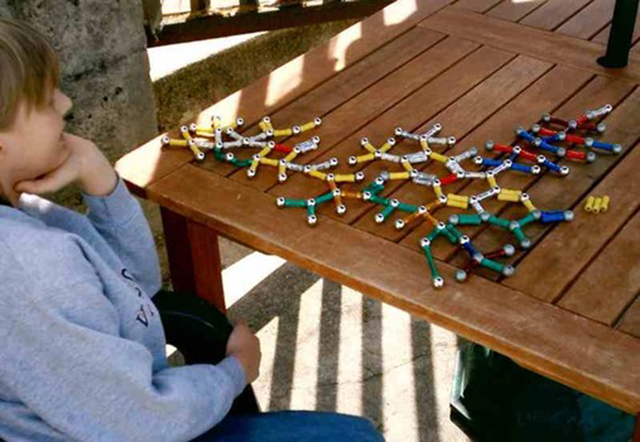
Repetition while training autistic adults can interfere with learning.Courtesy Poindexter Propellerhead at the English language Wikipedia
Repetition when training people with autism spectrum disorder can actually prevent them from learning, say researchers at Carnegie Mellon University (CMU). The research was announced on Oct. 5, 2015 and was published in Nature Neuroscience.
People with autism can sometimes learn a new skill or behavior, but can only apply it in a specific context. They struggle to use the learned skill in a new context. Autistic children can learn what a dog is, for example, by being shown a picture of a dog and repeating the word dog over and over. They cannot, however, relate the concept of another type of dog or cat to their previous knowledge, and must learn information from scratch. Researchers say these findings challenge popular educational methods for children with autism that focus on drills and repetition.
High-functioning adults with autism and a control group were trained to search on a computer screen for three diagonal bars surrounded by horizontal lines. The researchers asked all the participants to identify the diagonal bars during eight daily practice sessions and recorded their speed and accuracy. The bars stayed in the same place for the first four days and were then moved to another place on the screen for days five to eight of the study.
“It was crucial to set up the experiment this way so that we could initially observe the learning in the ASD individuals in a simple, well-established task but then also document the difficulty in transferring the knowledge as the experiment progressed,” said Dov Sagi of the Weizmann Institute of Science.
Both the autistic participants and the control group learned the first location of the diagonal bars during the first four days of the study. When the placement of the diagonal bars was changed, the control group smoothly transitioned to learning the new location and continued to improve their learning performance. The autistic group, however, were not able to improve their performance when the location changed. Researchers say this showed that the participants with autism did not benefit from learning the first location and were not able learn the second location as well as the first, suggesting that excessive repetition had a negative effect on their learning abilities.
“There have been few systematic investigations into the fundamental mechanisms by which information is acquired by ASD individuals – and into the potential reasons for their restricted, atypical learning. This study begins to scratch the surface of the phenomenon," said Marlene Behrmann. “It’s like they showed ‘hyperspecificity’ of learning – their learning became fixed and inflexible – since learning the first location, adversely influenced their ability to learn the second instance,” said Hila Harris, the study’s lead author from the Weizmann Institute.
The researchers ran the same experiment again, but inserted “dummy” screens that did not show any diagonal bars. When the bars’ location changed on the fifth day, the participants with autism efficiently learned the new location. “Our conclusion is that breaks in repetition allow the visual system some time to rest and allow autistic individuals to learn efficiently and to then generalize,” said New York University’s David Heeger. “Repeated stimulation leads to sensory adaptation which interferes with learning and makes learning specific to the adapted conditions. Without adaptation, learning is more efficient and can be generalized.”
The research team believes that the findings have important implications for educating individuals with autism. “Individuals with autism need to be taught in ways that support or promote generalization rather than in ways that reinforce over specificity,” said Nancy Minshew, professor of psychiatry and neurology at the University of Pittsburgh and in the joint CMU-Pitt CNBC. “For example, in the context of learning what a dog is, using a full range of examples of dogs – and even of animals, more generally – incorporates variability from the beginning and promotes learning a broad concept rather than a specific example.”
